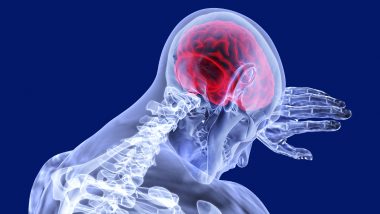London, Dec 2: Scientists have identified two key networks within the brain which play a crucial role in the risk that an individual will attempt suicide -- one of the world's major killers. The finding by researchers, including those from the University of Cambridge in the UK, may provide important targets for the generation of more effective suicide prevention strategies. 'Brain Network Responsible for Perception of Touch Much More Complex Than We Know'.
The study, published in the journal Molecular Psychiatry, reviewed two decades worth of existing literature relating to brain imaging studies of suicidal thoughts and behaviour. The researchers looked at 131 studies, which covered over 12,000 individuals, looking at alterations in brain structure and function that might increase an individual's suicide risk.
They noted that 800,000 people die globally by suicide every year, the equivalent of one every 40 seconds. Suicide is the second leading cause of death globally among 15-29-year-olds, the researchers said. The team noted that more adolescents die by suicide than from cancer, heart disease, AIDS, birth defects, stroke, pneumonia, influenza, and chronic lung disease combined. Cancer-Affected People Are Four Times More Likely to Commit Suicide, Says Study.
The researchers looked for evidence of structural, functional, and molecular alterations in the brain that could increase the risk of suicide. They identified two brain networks -- and the connections between them -- that appear to play an important role. The first of these networks involve areas towards the front of the brain known as the medial and lateral ventral prefrontal cortex and their connections to other brain regions involved in emotion, the researchers said.
Alterations in this network may lead to excessive negative thoughts, and difficulties regulating emotions, stimulating thoughts of suicide, they said.
The researchers explained that the second network involves regions known as the dorsal prefrontal cortex and inferior frontal gyrus system. Alterations in this network may influence suicide attempt, in part, due to its role in decision making, generating alternative solutions to problems, and controlling behaviour, the study found. Foods that Can Damage Your Brain: 5 Things You Eat That Can Slowly (But Surely) Cause Memory Loss and Brain Fog.
The researchers suggest that altering the networks in terms of their structure, function or biochemistry, might lead to a situation where an individual thinks negatively about the future. This can also make them unable to control their thoughts, which might lead to situations where an individual is at higher risk for suicide, they said. "The review provides evidence to support a very hopeful future in which we will find new and improved ways to reduce risk of suicide," said Professor Hilary Blumberg from Yale University in the US. "The brain circuitry differences found to converge across the many studies provide important targets for the generation of more effective suicide prevention strategies," Blumberg said.













 Quickly
Quickly




















